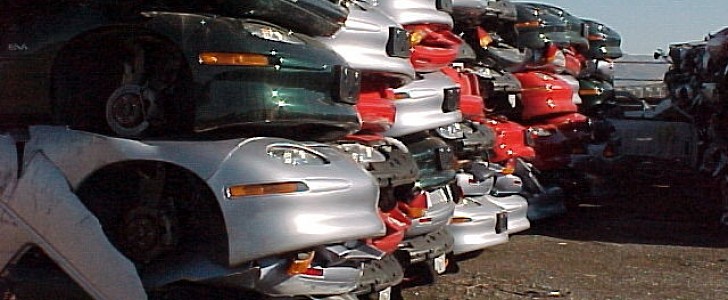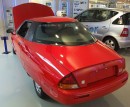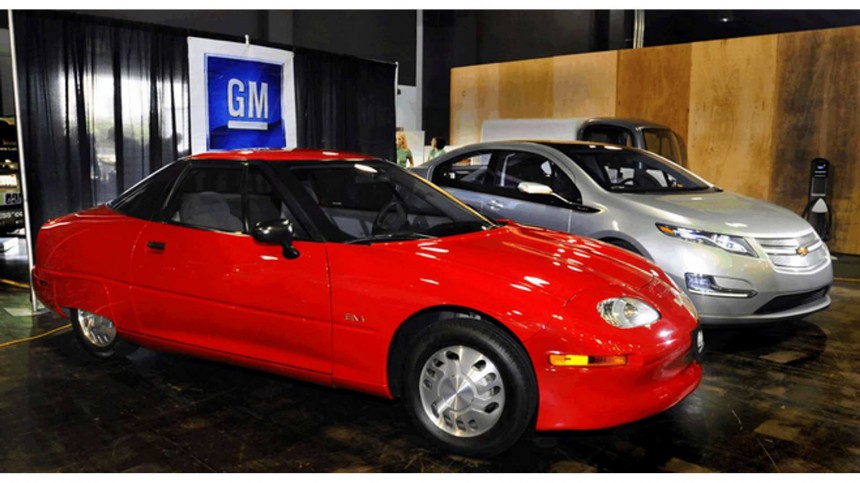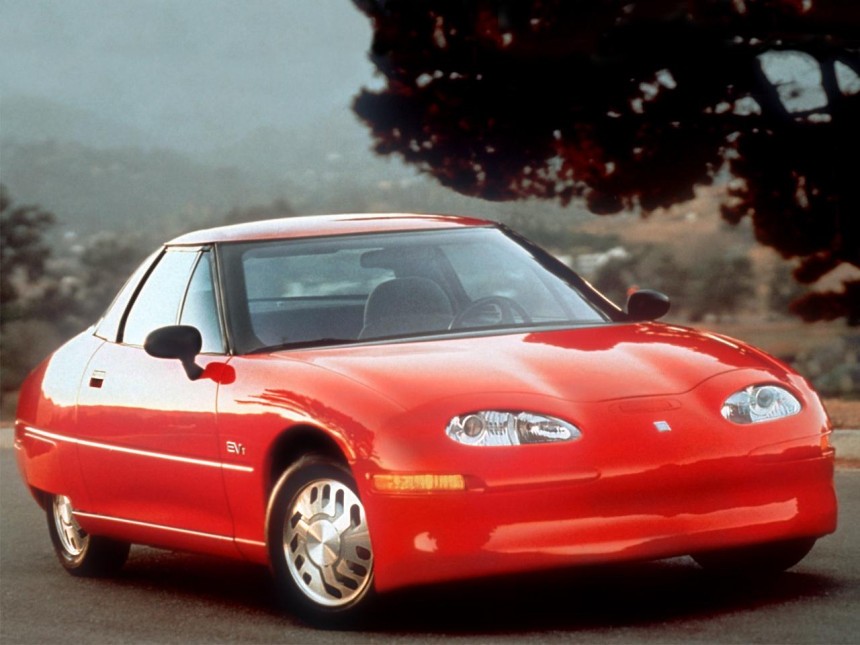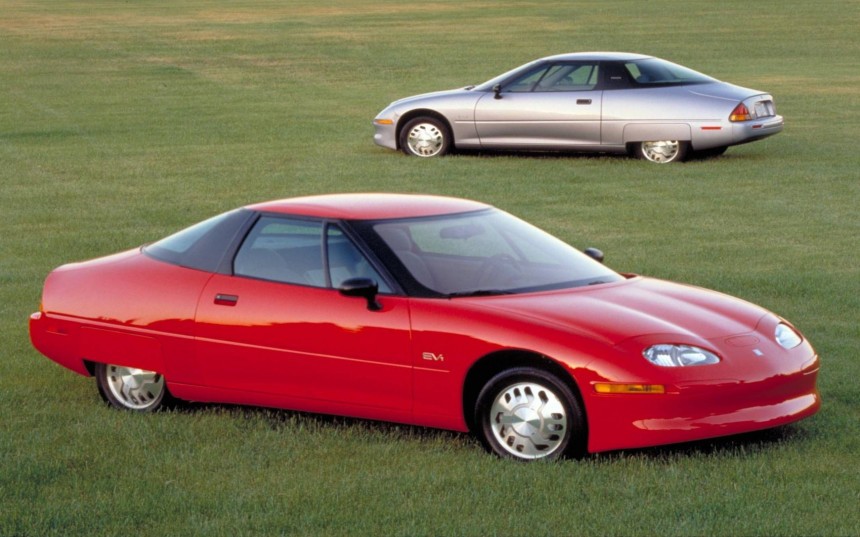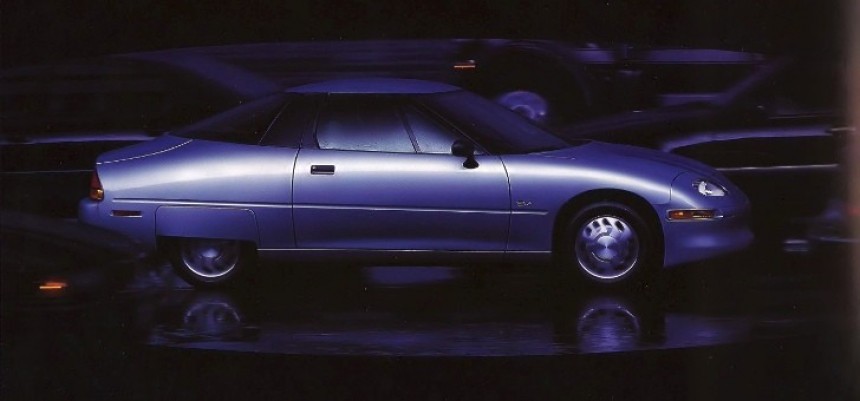It's pretty easy to get bogged down in hyperbole when talking about all the Hollywood-level drama behind the scenes in the auto industry. But if you believe one bit of it, believe this, the story behind the General Motors EV1 had as many red flags as a particularly brutal day at the Talladega Speedway.
There are some in the EV enthusiast sphere that believes electric vehicle technology's been suppressed and stifled as early as the turn of the late 19th century.
Legend has it that American entrepreneurs Henry Ford and Thomas Edison had a little gentlemanly wager between them as to whether petroleum or battery power would be the preferred fuel for American cars of the next 100 years.
Contemporary wisdom tells us that Henry Ford won, assuming this wager isn't just an urban legend. Whether it is or not, electric cars were left to be little more than the musings of DIY enthusiasts. But also city-dwelling urban planners were convinced that American urban centers were too cramped to accommodate American land ships for prolonged periods. Credit to them, they had a compelling argument.
There were flashes in the pan between the end of the Second World War and the 1990s, with the Henney Kilowatt city EV probably being the most famous and noteworthy example.
But even after the muscle car era ended in the 1970s, it was going to take a population still gung-ho about V8 engines some more time before warming up to the idea of EV passenger cars. Maybe a bit too much time if you ask some EV junkies. But that's a whole other can of worms.
Electric motors had a tendency to be associated with golf carts and forklifts in those days. This notion may make Americans of this era appear like simpletons in hindsight. But in their defense, there was really not much of a clue among the common citizen that we would ever have to worry about petroleum shortages in their lifetimes.
Americans of the 70s and 80s believed wholeheartedly that the 1973 gas crisis was just a one-time phenomenon. Oh, how we wish that were true. By 1990, the governments of several nations in the newfangled European Union and a few key U.S. States began to implement new quotas for automakers to meet to continue selling cars in their jurisdiction.
As much as that sounds a like hippy, Greenpeace nonsense, it was actually designed to incentivize the development of alternative fuels to gas and diesel. Not just of the battery EV variety, but anything that had the potential to be a large-scale solution to a world without petrochemicals. Pollution issues with battery quality mineral mining and refinement aside, these new laws were the perfect catalyst for electric cars to rise again.
At least in terms of General Motors, it all started not with the EV1, but a lesser-known predecessor, the 1990 Impact Experimental Concept. GM's first serious attempt at an electric vehicle in decades was unveiled to the public at the 1990 Los Angeles Auto Show.
It's said that California environmental officials were so impressed by GM's design it became the impetus for their own alternative fuel incentive program. This was a market GM seemed prime to meet. The Detroit automotive giant happily handed out two-week test drives to civilians lucky enough to sign up and be selected.
Overall the Impact was well received. A high-seven to low-eight zero to 60 time isn't that far off modern EV performance. It was followed up in earnest with the GM EV1 starting in 1996.
By this point in development, the EV1 was looking every bit at the production-ready all-electric alternative General Motors intended it to be. All many years before Tesla was even a glimmer in a South African entrepreneur's mind.
Two generations of EV1 made their way out of Detroit factories to a very much amused audience of EV enthusiasts and members of the motoring press. Journalists praised its true to form passenger car function. Save for some less than refined Lead Acid, Nickel-Metal hydride batteries (Lithium-Ions weren't available quite yet at this point).
There was quite a lot to like with what GM had come up with. It's a little under 140 horsepower electric motor wasn't all that bad either. It's around 30 horsepower or so more powerful than a first-generation Nissan Leaf, in fact.
But by 2003, seemingly for no good reason at all, GM canceled the EV1 program forever. Seizing back most of the 1,100 or test vehicles produced since 1996 and melting them back down into washing machines or something. The 2006 film Who Killed the Electric Car attempted to explain this sudden and complete 180 degrees flip on the much-hyped EV.
The film goes on to speculate that big American oil companies ordered all the EV1 prototypes destroyed and threatened retaliation if their demands weren't met. In the same film, one GM employee passes off the EV1 cancellation due to its relatively high price. Along with a not all that great EV range of around 126 kilometers (78 mi) on lead-acid batteries and 228 kilometers (142 mi) on Nickel-Metal hydride batteries.
In fairness, there's a decent argument that EV technology just wasn't at the level it needed to be to be viable in the late 90s and early 2000s. But others in the EV space will tell you that's a load of bovine excrement. Whatever the case may be, there are a few surviving EV1s out there. If you see one, you'll be sure to remember it. Not the least bit because of the crazy story behind it.
Legend has it that American entrepreneurs Henry Ford and Thomas Edison had a little gentlemanly wager between them as to whether petroleum or battery power would be the preferred fuel for American cars of the next 100 years.
Contemporary wisdom tells us that Henry Ford won, assuming this wager isn't just an urban legend. Whether it is or not, electric cars were left to be little more than the musings of DIY enthusiasts. But also city-dwelling urban planners were convinced that American urban centers were too cramped to accommodate American land ships for prolonged periods. Credit to them, they had a compelling argument.
But even after the muscle car era ended in the 1970s, it was going to take a population still gung-ho about V8 engines some more time before warming up to the idea of EV passenger cars. Maybe a bit too much time if you ask some EV junkies. But that's a whole other can of worms.
Electric motors had a tendency to be associated with golf carts and forklifts in those days. This notion may make Americans of this era appear like simpletons in hindsight. But in their defense, there was really not much of a clue among the common citizen that we would ever have to worry about petroleum shortages in their lifetimes.
Americans of the 70s and 80s believed wholeheartedly that the 1973 gas crisis was just a one-time phenomenon. Oh, how we wish that were true. By 1990, the governments of several nations in the newfangled European Union and a few key U.S. States began to implement new quotas for automakers to meet to continue selling cars in their jurisdiction.
At least in terms of General Motors, it all started not with the EV1, but a lesser-known predecessor, the 1990 Impact Experimental Concept. GM's first serious attempt at an electric vehicle in decades was unveiled to the public at the 1990 Los Angeles Auto Show.
It's said that California environmental officials were so impressed by GM's design it became the impetus for their own alternative fuel incentive program. This was a market GM seemed prime to meet. The Detroit automotive giant happily handed out two-week test drives to civilians lucky enough to sign up and be selected.
Overall the Impact was well received. A high-seven to low-eight zero to 60 time isn't that far off modern EV performance. It was followed up in earnest with the GM EV1 starting in 1996.
Two generations of EV1 made their way out of Detroit factories to a very much amused audience of EV enthusiasts and members of the motoring press. Journalists praised its true to form passenger car function. Save for some less than refined Lead Acid, Nickel-Metal hydride batteries (Lithium-Ions weren't available quite yet at this point).
There was quite a lot to like with what GM had come up with. It's a little under 140 horsepower electric motor wasn't all that bad either. It's around 30 horsepower or so more powerful than a first-generation Nissan Leaf, in fact.
But by 2003, seemingly for no good reason at all, GM canceled the EV1 program forever. Seizing back most of the 1,100 or test vehicles produced since 1996 and melting them back down into washing machines or something. The 2006 film Who Killed the Electric Car attempted to explain this sudden and complete 180 degrees flip on the much-hyped EV.
In fairness, there's a decent argument that EV technology just wasn't at the level it needed to be to be viable in the late 90s and early 2000s. But others in the EV space will tell you that's a load of bovine excrement. Whatever the case may be, there are a few surviving EV1s out there. If you see one, you'll be sure to remember it. Not the least bit because of the crazy story behind it.
